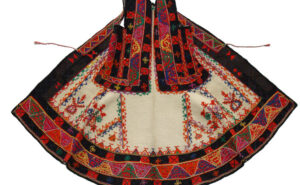The Mediterranean has always been a melting pot of cultures, traditions, and influences—and wedding dresses are no exception. Over the centuries, brides across the region have worn gowns that reflect the social norms, religious beliefs, and aesthetic values of their time. From ancient Greece to modern-day Italy and Spain, let’s take a journey through the fascinating history of the Mediterranean wedding dress!
Greek and Roman brides in the ancient times
In Ancient Greece, brides wore a long, flowing white tunic called a peplos, symbolizing purity and prosperity. They also draped an orange or red veil, the krivantron, which was believed to ward off the evil eye. Roman brides had a similar tradition, wearing a simple white tunic (tunica recta), cinched at the waist with a special knot that only the groom was allowed to untie.
Luxury and religion in the Middle ages
During the Middle Ages, Mediterranean weddings—especially among the upper classes—were often more about politics than romance. Brides wore extravagant gowns made of velvet, silk, and embroidered fabrics, often adorned with gold and silver threads. White was not the standard color yet; instead, red and blue were popular choices, symbolizing luck and devotion.
The Renaissance status and elegance
The Renaissance brought a new wave of opulence to wedding attire. In Italy, brides wore elaborate dresses decorated with pearls and gemstones, while in Venice, rich colors like deep blue and emerald green were in fashion. Meanwhile, in Spain, strong religious influences led noblewomen to wear black wedding dresses, a tradition that would continue for centuries.
The highlight of the white dress in the 19th century

The tradition of the white wedding dress, now so iconic, became popular after Queen Victoria’s wedding in 1840. But in the Mediterranean, local customs still played a huge role. In Greece and Cyprus, brides often wore traditional garments like the sigouni or kabadi, while in Spain, the mantilla—a lace veil—remained a classic choice.
Modern meets tradition in the 20th & 21st
centuries
Today, Mediterranean wedding fashion blends global trends with local heritage. Italian brides often opt for luxurious lace gowns, while Spanish brides embrace dramatic silhouettes inspired by flamenco. In Greece and Cyprus, many brides choose flowing, Grecian-style dresses made of silk or chiffon, keeping the ancient influences alive.
choose flowing, Grecian-style dresses made of silk or chiffon, keeping the ancient influences alive.
Final thoughts
The history of the wedding dress in the Mediterranean is a beautiful reflection of changing societies, artistic influences, and cultural traditions. While modern brides embrace international fashion, many still incorporate traditional elements into their big day—creating a perfect fusion of past and present.
